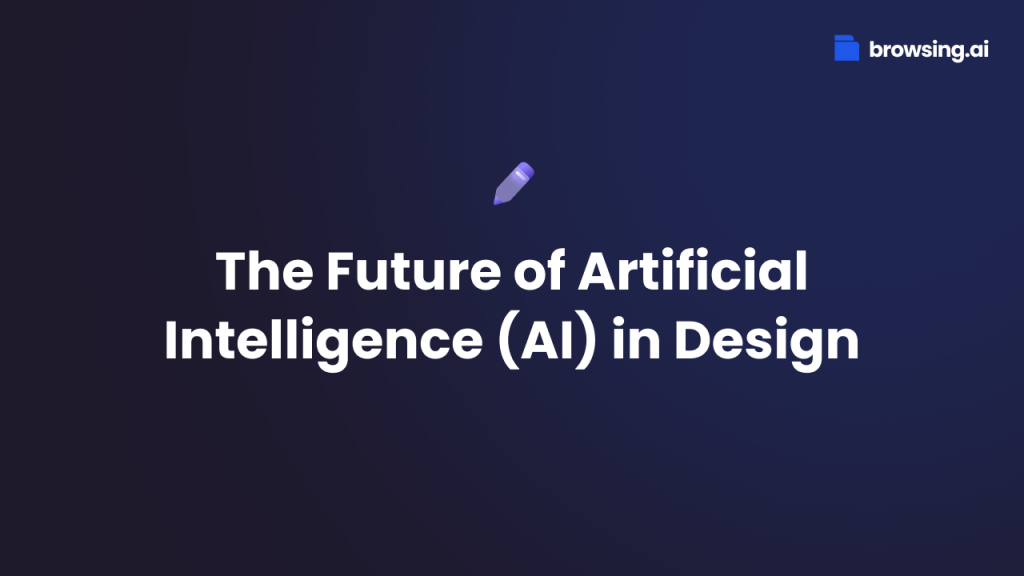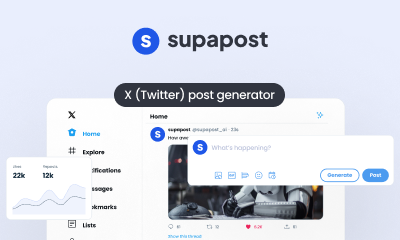The rapid evolution of AI-generated art and design has left many professionals wondering about the future of the industry. In this article, I’ll share my perspective on the current state of design, address common questions about AI tools, and provide practical advice on how designers can best integrate AI into their workflow.
The Learning Curve of Design Tools and Creativity
Mastering design takes years of practice, involving a delicate balance between creativity and craftsmanship. Modern tools like Figma, Sketch, and Adobe XD have simplified the design process, but reaching proficiency demands significant dedication.
Design is often a journey of trial and error. Many hours go into refining ideas, experimenting with layouts, and ensuring the design resonates with the audience. Sometimes, even after weeks of hard work, a concept may not connect with the audience, leading to frustration.
AI design tools, such as DALL-E, Midjourney, and Stable Diffusion, present a promising shift in this landscape. These tools enable designers to generate stunning visuals with a simple text prompt, drastically reducing the time and effort needed to bring concepts to life. Imagine a world where instead of spending hours perfecting a sketch, a designer can describe their vision in words and receive a detailed, high-quality image in return. This capability transforms the creative process, making it more efficient and less reliant on traditional, labor-intensive methods.

AI-generated design: superman in a city closeup. Image by Dusan Kovacevic created with MidJourney
Creating a high-quality, detailed image of a character like Superman requires significant effort and expertise from a designer. The process typically involves several stages, including research and concept development, where designers gather references and sketch multiple ideas to capture the essence of the character. Following this, they create detailed line art, apply meticulous coloring and shading to add depth, and integrate textures and fine details to bring the character to life. Finally, designers add complementary backgrounds and special effects, then refine the artwork based on feedback.
With AI, the tedious and often painstaking process of visualizing ideas could soon become a matter of minutes rather than hours. This allows designers to focus more on refining their creative ideas and less on the manual execution of those ideas. The potential of AI in design is not just about speed, but also about expanding the creative horizons of what is possible, enabling designers to explore a multitude of creative directions with minimal effort.
The Benefits of AI in Design
AI is revolutionizing the design industry, acting as a powerful enhancer for human creativity. Far from replacing designers, AI design tools are augmenting their capabilities, allowing them to reach new heights. Here’s how AI can elevate your design process:
Efficiency Just as steam engines once accelerated industrial progress, AI is speeding up the creative workflow. By automating repetitive tasks and generating initial concepts, AI allows designers to focus on refining ideas and perfecting the final product, saving countless hours in the process.
Cost Savings Efficiency often translates into cost savings. AI reduces the need for extensive manpower and can streamline the production process. This means design teams can remain leaner and more agile, cutting down on outsourcing costs and maximizing internal resources.
Scalability AI empowers creative teams to scale their output effortlessly. Faced with increasing demands and tighter deadlines, AI helps designers manage larger workloads without sacrificing quality, making it possible to meet the growing needs of modern businesses.
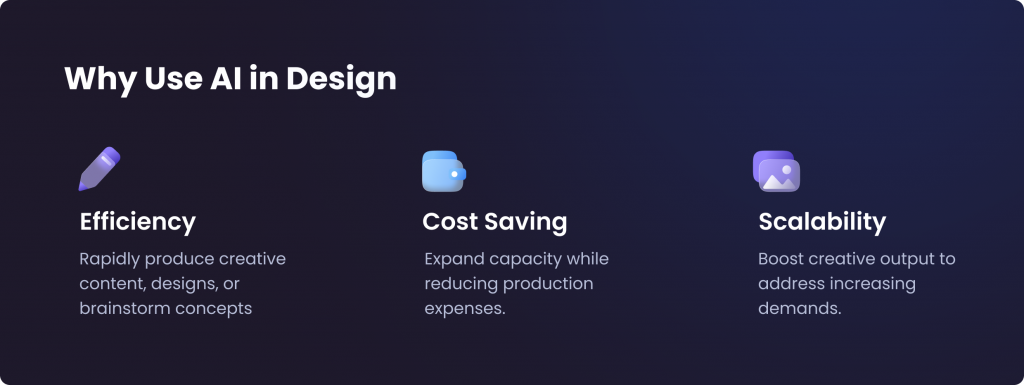
Will AI Take My Job?
The rise of AI-generated art has caused anxiety among designers, fearing that AI will replace their roles. It’s understandable, given that AI-generated art is increasingly being used for commercial purposes. Companies looking to cut costs may choose to “hire” an AI instead of a human designer.
But history provides some reassurance. During the industrial revolution, machines replaced roles that involved heavy lifting and monotonous work but didn’t replace humans entirely. Similarly, AI tools will complement human potential rather than replace it altogether.
Leveraging AI in Design: A Collaborative Future
AI tools are poised to become an extension of design teams rather than simple tools. Future iterations of AI will learn about designers’ personal tastes, enabling them to create works that reflect both functionality and the creator’s unique style.
Here are a few ways designers can leverage AI in their work:
Creative Exploration
Creative exploration with AI tools offers an exciting new avenue for designers, leveraging the collective experience encapsulated in billions of images. These tools, adept at both text-to-image and image-to-image conversions, facilitate rapid iteration and discovery, making them invaluable in the creative process.
In text-to-image scenarios, designers can utilize tools like Stable Diffusion or Midjourney to input detailed prompts that generate specific images. For instance, a designer could use a prompt to visualize a new line of eco-friendly packaging that emphasizes sustainability without compromising style or practicality, featuring innovative materials.
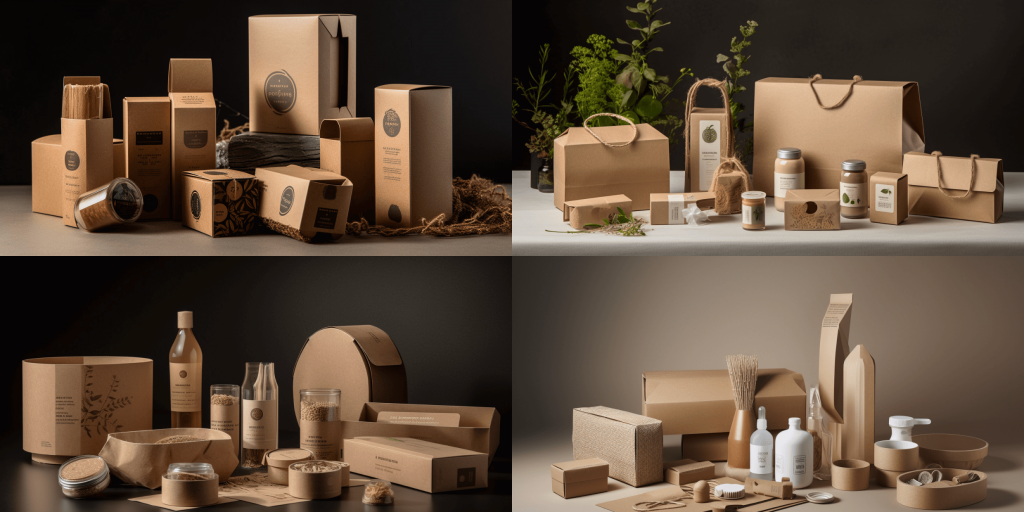
Prompt: Visualize a new line of eco-friendly packaging, focusing on sustainability without sacrificing style and practicality, featuring innovative materials. Image by Dusan Kovacevic created with MidJourney
Similarly, in image-to-image scenarios, AI tools can take an existing image and transform it, creating variations that maintain some elements while altering others. This capability is particularly useful for evolving a design concept without starting from scratch, thereby streamlining the creative workflow and enhancing productivity.
Complete Product Design
In product design, the adoption of Artificial Intelligence (AI) is proving to be a game-changer, particularly in terms of efficiency and creativity. AI has the remarkable capability to expedite the design process by automating the creation of detailed storyboards, crafting well-defined user personas, and developing comprehensive user interface (UI) concepts. This rapid generation and iteration of design elements allows designers to visualize concepts more quickly and with greater clarity than traditional methods typically allow.
The use of AI in this early phase of design helps in reducing the time-consuming tasks that often bottleneck the creative process. Designers are freed from the repetitive and manual aspects of design setups, enabling them to dedicate more time to refining and enhancing the creative outputs. This shift not only accelerates the development cycle but also enhances the quality of the designs produced. By leveraging AI, designers can explore a wider range of possibilities, test more iterations, and achieve a higher degree of personalization and user-centricity in their projects.
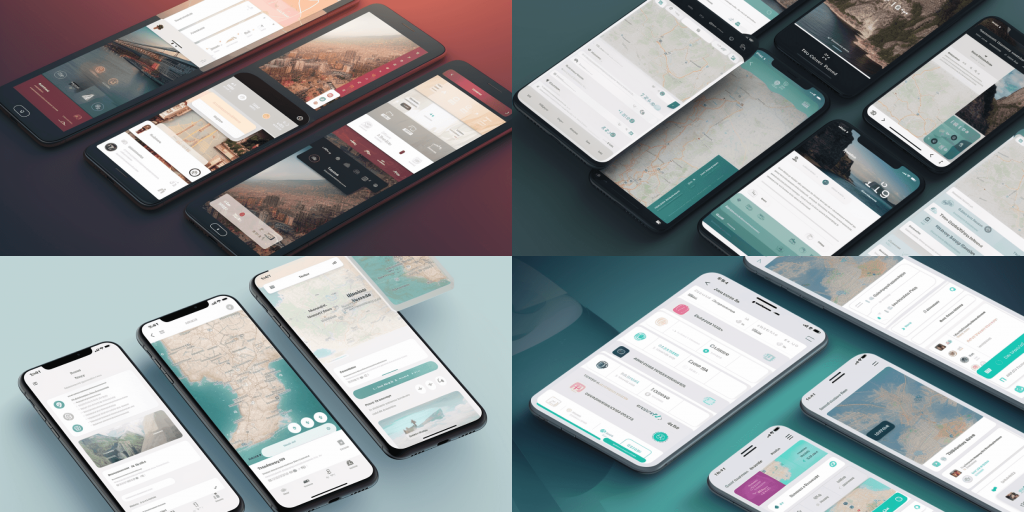
Prompt: ui, ux, mobile app design for a travel planning product. Image by Dusan Kovacevic created with MidJourney
The Bottom Line on AI in Creative Industries
Looking ahead, the potential for AI in design is vast. AI makes things quicker, faster, better. From creating immersive virtual environments to personalizing user experiences, AI opens up new possibilities that were previously unimaginable. It’s an exciting time to be a designer, with AI serving as a powerful ally in our creative journey.
AI will continue to evolve, offering even more sophisticated AI design tools that learn from our unique styles and preferences. This will enable us to create designs that are not only functional but also deeply personalized and innovative.
